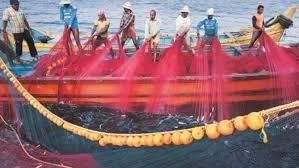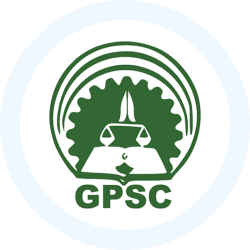GPSC (Goa) Exam > GPSC (Goa) Notes > Goa State PSC (GPSC) Preparation > Goa: Fishing
Goa: Fishing | Goa State PSC (GPSC) Preparation - GPSC (Goa) PDF Download
| Table of contents |

|
| India's Fisheries Sector |

|
| Fishing in Goa |

|
| Impact on Traditional Fishing Communities |

|
| Development Potential |

|
India's Fisheries Sector

- India is the second-largest fish producer in the world, accounting for 5.68% of global production, and earned Rs 30,213 crore from exports in 2013-14.
- The fisheries sector contributes about 1.25% to India's Gross Domestic Product (GDP) and 4.6% to agricultural GDP.
- India’s long coastline, bordered by water on the east, west, and south, supports a significant fishing industry, making it the fourth-largest fish producer globally.
- Approximately 10 million people in over 4,000 coastal regions are engaged in fishing, largely for their livelihood.
- India has significant potential for both freshwater and marine fishing, with large reservoirs and substantial contributions to the economy.
- The fisheries sector adds about $70 million annually to India’s foreign exchange reserves.
- Despite its importance, there is considerable untapped potential for export in the fisheries sector.
Growth and Investment
- The fisheries industry has been growing steadily and attracting foreign investment due to its potential for high returns.
- Factors such as good infrastructure facilities and liberalized government policies are encouraging foreign investment.
- Both the central and state governments have initiated policies and programs to promote the fisheries sector's growth.
- The Department of Animal Husbandry, Dairying, and Fisheries oversees development, infrastructure programs, and welfare schemes in the fisheries sector.
- The Ministry of Food Processing Industries also contributes to the sector's growth.
Fishing in Goa
- Goa's coastline, about 100 kilometers long, is rich in marine resources, with fishing being a primary economic activity.
- The fishing industry in Goa supports related industries like canning, freezing, and fish processing, offering significant investment opportunities.
- Fishing in Goa is a popular activity for both locals and tourists, known for its enjoyment and stress-relieving qualities.
- Angling or fishing can be experienced at various spots such as Agonda Beach, Vagator Beach, and Chapora River, as well as in estuaries and rivers along the coastline.
- Common fish found include Soormai, Salmon, Mullet, Tarpon, Rockfish, Stingray, Guitarfish, and native lungfish.
- October is considered the best time for fishing in Goa.
Fishing Equipment Availability
- Various types of fishing can be practiced in Goa.
- Fishing equipment is readily available for rent at numerous locations across the state.
Fishing at the Beaches
- Fishing at Goa's beaches is enjoyable and often yields rockfish, stingrays, and guitarfish.
- It is recommended to choose quieter, more remote beaches to avoid disturbances from swimmers.
Fishing in Seasonal Rivers
- Goa features several rivers where fishing can be pursued, particularly in low-lying areas.
- The best fishing times are at the peak of high-water or just before it.
- Common catches include ladyfish and catfish, with occasional catches of the native barramundi.
Boat Fishing in Goa
- Boat fishing can be enjoyed by hiring a boat, with two main types: angling and bottom fishing.
- Angling: Less productive but can yield salmon and occasionally the native barramundi.
- Bottom Fishing: Done along the shore near rocky outcrops, typically catching rockfish and occasional snapper.
Impact on Traditional Fishing Communities

- Goa has nearly 90 villages engaged in traditional coastal fishing, primarily by the ramponkar communities.
- The introduction of technologically advanced vessels like trawlers and purse seines over the last 30 years has significantly impacted traditional fishing.
- These mechanized vessels engage in trawling, which is ecologically damaging as it disrupts coastal habitats and weeding grounds essential for shrimps, mackerels, and other small crustaceans.
- Traditional ramponkar fishermen, who have fished in these waters for generations, face challenges from this mechanized fishing, leading to decreased catches and increased competition.
- Some traditional fishermen are turning to tourism to compensate for reduced income.
- There are issues due to the disparity between traditional and mechanized fishing methods, with many traditional fishermen struggling to compete.
- Traditional fishermen may not be aware of government subsidies or new fishing techniques, and some cannot afford to switch to mechanized systems due to financial constraints.
Contribution to GDP
- The fisheries sector in Goa contributes about 2.5% to the state’s Gross Domestic Product (GDP), ranking third after West Bengal and Andhra Pradesh.
- It contributes 17.1% to Goa’s agricultural GDP.
- Goa contributes approximately 1.85% to India’s total marine fish landings.
Employment and Economic Impact
- Marine fisheries support a significant portion of the population in Goa, with over 5% of the total working population engaged in fishing and related activities.
- The fisheries sector, including fishing, promotion, and processing, is the second-largest industry in Goa in terms of both employment and income.
Development Potential
- There is considerable potential for fisheries development in Goa, particularly through brackish water and marine fish production.
- Potential Fishing Zone (PFZ) advisories highlight significant opportunities for precision fishing using satellite-based data and ocean surface temperature information.
- Fishery management schemes can help restore degraded habitats and resources.
- Artificial fish habitats in nearshore waters can enhance fish diversity and support breeding and spawning grounds for aquatic life.
Co-management and Sea Farming
- A democratic approach to fishery laws through co-management can help maintain marine fisheries sustainability in the state.
- Goa’s calm bays and lagoons offer good prospects for sea farming.
- Coastal farming is currently limited to green mussels and has recently expanded to finfish cage culture for species like cobia and sea bass in coastal areas.
Fishing and its Importance
- Fishing involves catching fish and other aquatic animals such as gastropods, bivalves, cephalopods, crustaceans, and echinoderms.
- Fish is a significant part of Goan life and culture, with over 90% of the population relying on it as a major food source.
Geographical and Oceanographic Features
- Goa has a coastline of 104 km, representing 1.28% of India’s total coastline of 8117 km.
- The ocean floor off Goa extends over approximately 10,000 km², reaching depths of around 100 fathoms.
Fishermen Population and Distribution
- The total number of fishermen in Goa is approximately 10,545, with South Goa contributing about 6,445 and North Goa about 4,100.
- There are around 2,189 fishermen families in Goa, with 1,388 in South Goa and 801 in North Goa.
- Artisanal fishermen families number 2,147, with 1,363 in South Goa and 784 in North Goa.
- The sex ratio among fishermen in Goa is 925 females per 1,000 males, with South Goa at 930 and North Goa at 916.
Employment in Fishing
- Active fishermen in Goa number around 2,370, with South Goa contributing 1,595 and North Goa 775.
- There are no individuals involved in fish seed collection.
- Approximately 1,481 people are engaged in fish marketing, with 953 from South Goa and 528 from North Goa.
- Women play a dominant role in fish marketing, accounting for 1,427 of the total, which is 96% of those engaged in this activity. Of these, 924 are from South Goa and 503 from North Goa.
Fishing Crafts and Trends
- The number of mechanized trawlers, canoes, and non-mechanized crafts has steadily increased from the 1960s to 2010.
Current Trends and Issues
- Marine fisheries resources in Goa are experiencing an unstable trend, with many resources showing depletion and some highly industrialized resources exhibiting negative growth.
- Natural fishing habitats are degrading due to both human activities and natural causes along the Goa coast.
- The damage caused by trawlers on the coastline is significant.
Need for Improvement
- There is a need to enhance fishery resources through sustainable exploitation and ecological restoration.
- A management and regulatory framework should be established by stakeholders under the leadership of the Department of Fisheries to maintain marine fisheries resources.
Management Practices
- The monsoon trawl ban along the Goa coast is an example of a temporal input management mechanism aimed at protecting fisheries during certain periods.
- The existing regulatory framework supports sustainable fishing activities by traditional and motorized vessels in inshore waters and by mechanized units in offshore waters.
Awareness and Training
- Awareness programs on sustainable and responsible fishing practices are provided to fishermen through research organizations to promote better fishing operations.
Question for Goa: FishingTry yourself: What is the primary economic activity along Goa's coastline?View Solution
The document Goa: Fishing | Goa State PSC (GPSC) Preparation - GPSC (Goa) is a part of the GPSC (Goa) Course Goa State PSC (GPSC) Preparation.
All you need of GPSC (Goa) at this link: GPSC (Goa)
Related Searches














